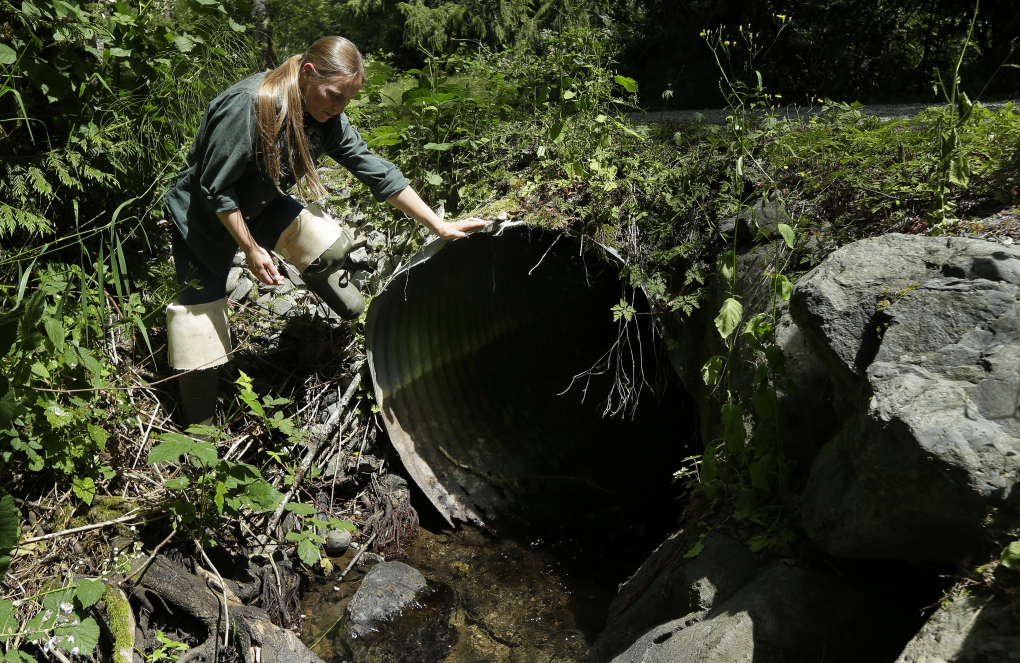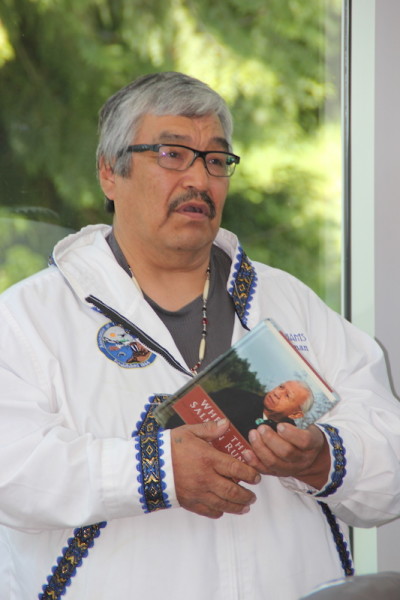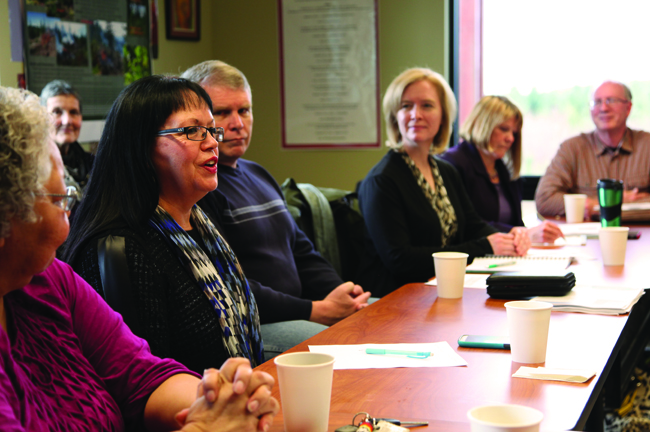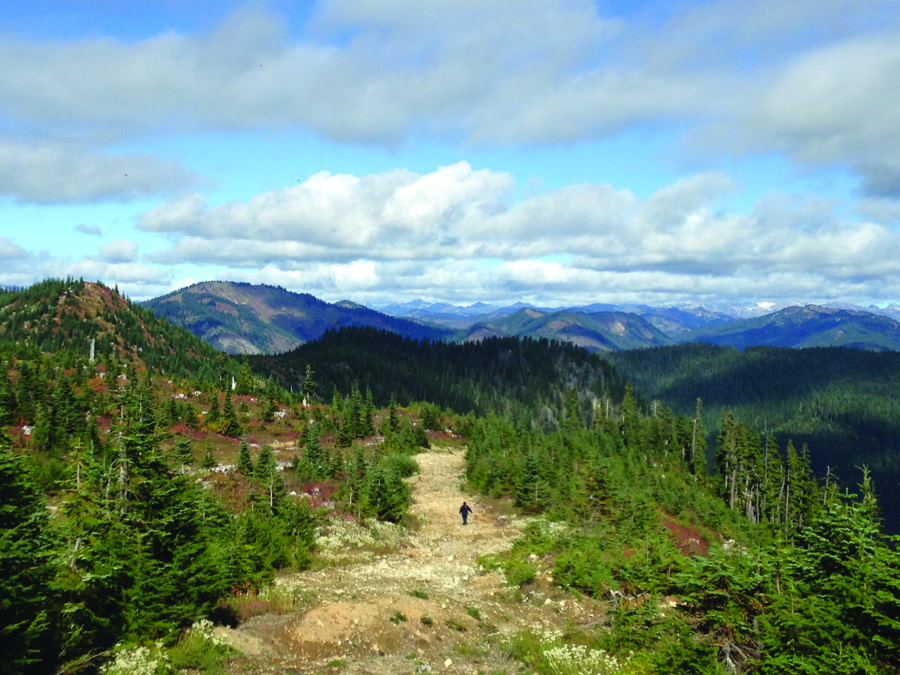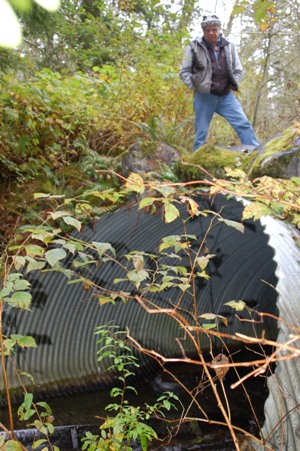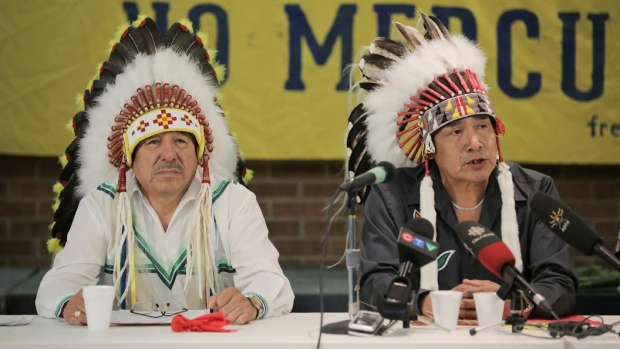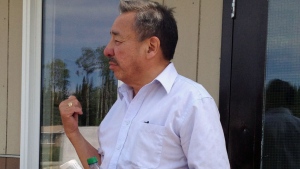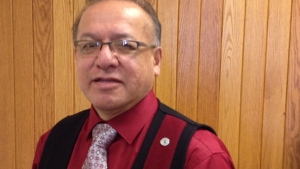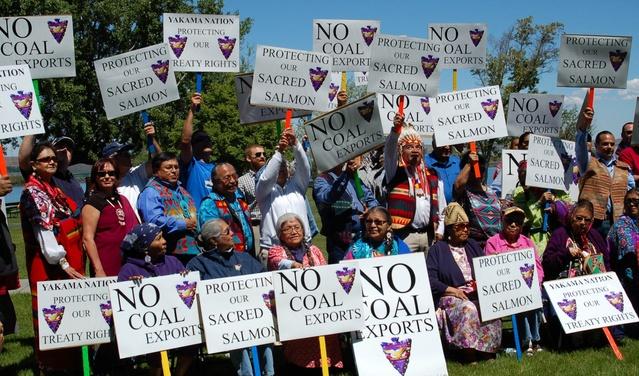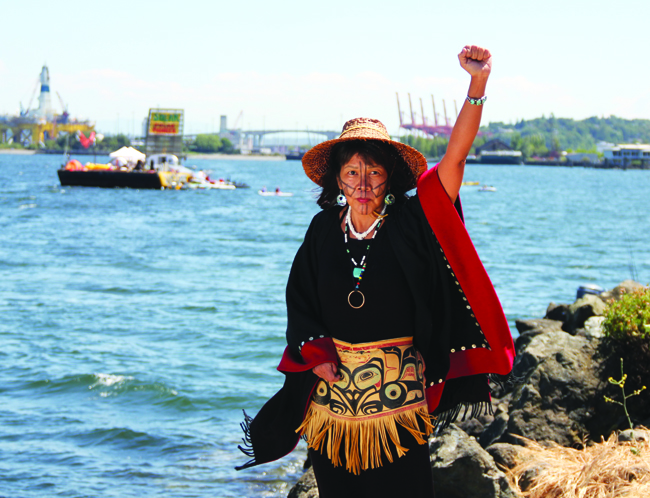
Photo/Micheal Rios
Article and photo by Micheal Rios
Idle No More encourages all Native and Indigenous peoples to stand in solidarity with our First Nations brothers and sisters and allies for Treaty Rights, water and land rights, and environmental protection on the sacred land of our ancestors. Decolonization is a vital part of Idle No More, as it is necessary to decolonize ourselves and our way of thinking to keep our Native culture going strong. As our elders have taught us, “what we do today is not for us, but for our children and our children’s children.”
Last month, members of the Idle No More movement held a “Native Women Rising” rally at the Don Armeni Park in West Seattle. Activists joined in a circle for drumming and singing, and reminded those listening about the importance of the Alaskan wilderness soon to be drilled by Shell Oil’s drilling rig, called the Polar Pioneer. The hashtag #ShellNO was born as the Native led protests garnered local and national news attention.
But who was responsible for coordinating the rally and bringing together activists, both Native and non-Native, to stand together in protest of Shell Oil Company? That would be Sweetwater Nannauck, Director of Idle No More Washington. Sweetwater was kind enough to be interviewed by Tulalip News in order to help spread the message of being Idle No More to the Tulalip community.
“I am Sweetwater Nannauck from the Tlingit, Haida, and Tsimshian tribes of southeast Alaska. I am the Director of Idle No More Washington and I’m here in Seattle standing up for our people in Alaska. I’m here today joined by Native and Indigenous peoples from all different tribal nations, who came to stand united in a spiritual and cultural way. We are bringing our prayers and calling our ancestors for help as we try to bring a peaceful resolution to stopping the arctic oil drilling.”
What is the impact when the Indigenous peoples of Canada, Alaska, and the Coast Salish peoples collaborate together?
“Well, I’d say it speaks to all of our ancestors, as our people have traveled down here from Alaska and mixed cross-culturally. I have stories of our people coming down here for trade, so really we’re following in the footsteps of our ancestors by coming together and showing we can stand united for our people and our future generations.”
What is the meaning behind having an Idle No More rally titled Native Women Rising?
“I was raised traditionally in Alaska, my grandparents had an arranged marriage, and we only ate our traditional foods. We had a matriarchal society which made my grandmothers strong women, so what I find in doing this work is we come along a lot of patriarchy. In western society, the way protests and activist movements are coordinated and received is usually male dominated. I want people to know, especially our Native and Indigenous peoples that for us our women have power, our women are the life givers, our women were out there on the water singing our songs of strength and healing, and we have that ability in us. What many Indigenous cultures have said and prophesized is when the world gets out of balance our women will step up and bring back that balance. That’s what all the women who take part in Idle No More are here to do, bring balance to our world.”
What advice do you have for any Native person who wants to become involved with Idle No More?
“I advise that they find other likeminded people and become active. What I’ve found since Idle No More started in 2012, we here in Washington have become much more active. I’ve organized over fifty events since 2012, and I’ll be focused on working with our Native youth in Washington throughout the summer. There are many ways to be active, such as sharing our voice and our message through music, through spoken word, through our culture, and through our ceremonies and prayers.”
How do you plan to get Native youth to become active participants in Idle No More?
“I’ll be working with Nataanii Means (Lakota), son of Russell Means, who is an amazing hip-hop artist and we’ll be teaching workshops with Native youth that include video making, spoken work, and how to be active in a cultural and spiritual way. We realize because of colonization and historical trauma that we can’t realistically expect the youth to step up and do this kind of work without addressing their concerns that we face and teach them how to heal from our historical trauma.”
What are your thoughts as they relate to oil drilling in the arctic and how that impacts our culture?
“My first thoughts are directed at its name, the Polar Pioneer, and to the other two arctic oil drillers who have similar names, the Noble Discoverer and the Arctic Challenger. To me these represent the colonization that is coming back to our shores again and it’s really time for our people to unite because this impacts all of us. The climate change effects, we’re in a draught presently, our waters are being contaminated, the air is dirty, our animals on land and in the sea are dying. This really is important for every single person who is walking on this planet. We feel Mother Earth’s pain.”
Some argue that oil drilling is a necessary evil to sustain the modern day way of living. What is your response to that kind of thinking?
“It’s not a perfect system, it never will be, but these are the cards we’ve been dealt. We need to stand together and fight for our lands, otherwise they are going to take everything away from us because of that greed. Fifty years from now, we want our children and their children to say that their ancestors stepped up and fought for what they believed in, just as today we can say about our ancestors.”
There are many tribes and tribal members in the U.S. and Canada who yield great monetary profits from following in western type thinking. They’ve built tribal enterprises that are based on their casinos and because of this they refuse to take an active role in anything that could tarnish their image or result in lost profits. What is your message to them?
“It’s hard because I understand the root cause of it is colonization. An elder once told me that the colonized have become colonizers, we are part of that system, but we can easily remove ourselves from it. The western term is ‘decolonization’, but it’s really reclaiming ourselves, reclaiming who we are, our culture, reclaiming our ways of doing things, going out on the water, being proud and knowing who we are. That’s where our strength lies, our culture is our medicine and it is healing for us. I invite any and all Native peoples to join us and sing our songs and say our people’s prayers, so that we are standing together because when we stand together, united, we have real power.”
For more information on how to join the Idle No More movement and to follow their events, please LIKE their Facebook page ‘Idle No More Washington’ or visit www.idlenoremore.ca


